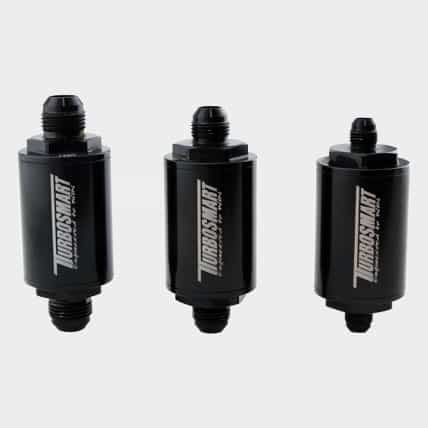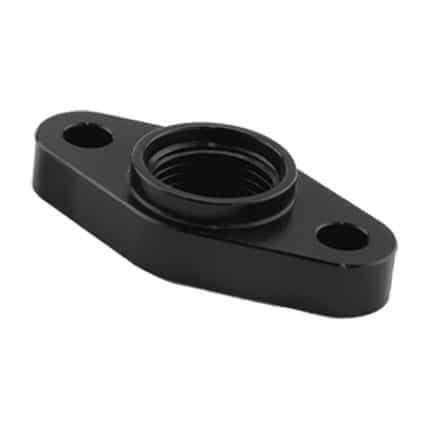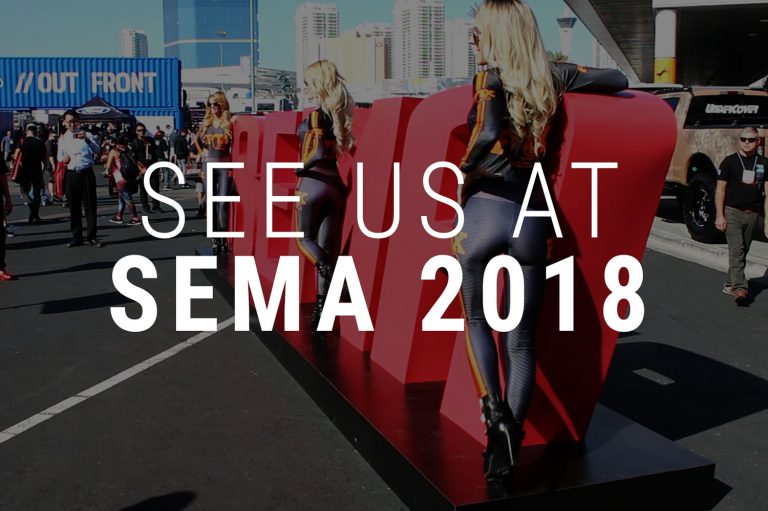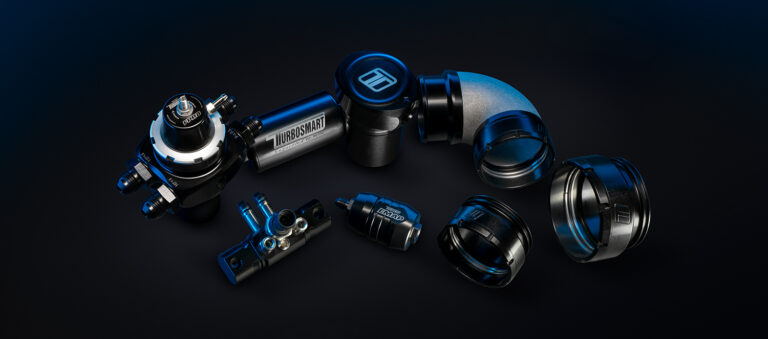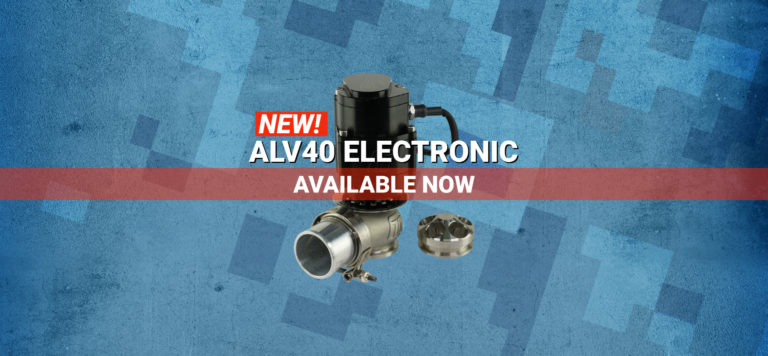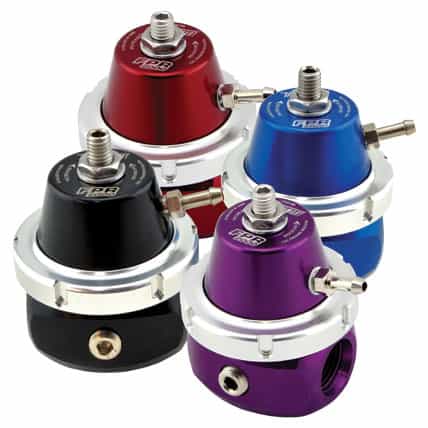
What Are Fuel Pressure Regulators?
A fuel pressure regulator (FPR) is a device that controls the pressure of fuel supplied to the fuel injectors on an engine.
How Does A Turbosmart Fuel Pressure Regulator Work?
A Turbosmart FPR works by bleeding off a portion of the fuel flow to the injectors from the fuel pump to control the fuel pressure. Fuel is pumped from the fuel tank to the fuel rail by the fuel pump. The FPR is normally mounted after the fuel rail. This ensures that the fuel rail has priority in fuel flow. The valve in the FPR controls the amount of fuel that is bled from the fuel rail by opening an outlet port. This allows fuel to flow back into the fuel tank.
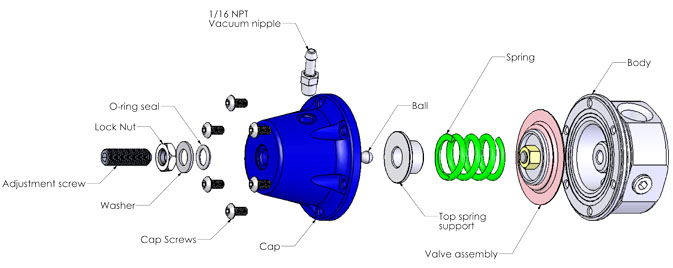
Base Pressure
All injectors need a pressure difference between the inlet and the outlet of the injector to spray fuel into the combustion chamber. This is called the base pressure. The base pressure is adjusted on all Turbosmart FPR’s via the adjustment screw to suit the injectors and fuel pump system you are using.
The adjustment screw pushes down on a spring which applies a force onto the valve. When the pressure inside the bottom chamber of the FPR exerts a high enough force on the valve. It overcomes the spring force and lift’s the valve off its seat. This allows fuel to flow through the outlet port effectively controlling the fuel pressure in the fuel rail.
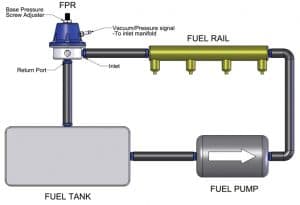
Since the outlet of the injector is exposed to manifold vacuum/pressure which varies depending on throttle movement. However, the flow of fuel from the fuel pump is constant. The valve needs a reference to continuously change the amount of fuel bled to maintain constant fuel pressure to the injectors. In addition to the spring force acting on the valve. A vacuum/boost signal also applies a force onto the valve so that the valve is always maintaining a constant pressure difference between the inlet and outlet of the injector.
Once the Base Pressure is Set
The base pressure is set without any line connected to the vacuum/boost reference nipple. Once the base pressure has been set. The vacuum/boost line is then connected to the reference nipple.
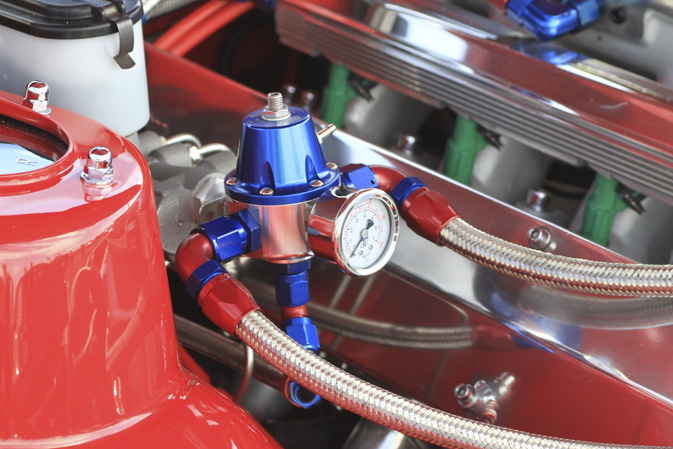
For Example A base pressure of 40PSI.
Idling at 20inHg, the nozzle is exposed to 20 inHg vacuum causing fuel to be sucked into the intake manifold. This combined with the 40 PSI base pressure would equate to a theoretical spray pressure of 50 PSI. This is above the desired fuel pressure of 40 PSI. Since the top of the valve in the FPR is also exposed to 20 inHg. The valve is pulled up which opens the outlet port up to increase the fuel being bled from the fuel rail. Further, reducing the pressure by 10 PSI. This then gives you your desired fuel pressure of 40 PSI.
Boost Pressure
At a boost pressure of 10 PSI, the nozzle is exposed to 10 PSI of pressure. This pressure is acting against the base fuel pressure. This means that the spray pressure would be 30 PSI. This is below the target fuel pressure. By also providing the top of the valve with a reference boost signal of 10 PSI. Now the FPR has a combined force to provide 50 PSI of fuel pressure. Overcoming the force exerted on the nozzle to give you your 40 PSI target pressure.
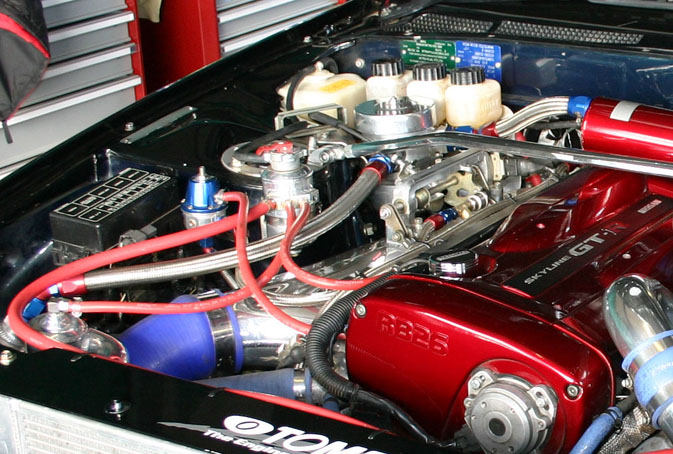
Important Features of Turbosmart’s FPR Range
Ratio
This is the ratio between boost pressure and fuel pressure increase. A 1:1 ratio means that for every 1 PSI increase in boost pressure. The Fuel pressure will also increase by 1 PSI to ensure that the pressure differential between the inlet and outlet of the injector is constant. All injectors are rated to certain base pressure. Injectors are solenoid valves that open and close when power is applied to them.
The injector has a solenoid which provides enough force to pull open the valve in the injector to overcome the fuel pressure keeping the injector closed. If the fuel pressure is too high. The solenoid will not have enough energy to open the valve fully. This will cause the engine to starve of fuel. It is essential to maintain a constant pressure differential between the inlet and outlet of the injector. Hence why a 1:1 ratio FPR is ideal. All Turbosmart FPR’s feature a 1:1 rising rate.
Flow Capabilities
Electric Fuel Pumps
Electric fuel pumps are designed to flow a constant amount of fuel regardless of engine rpm and/or boost pressure. At idle, the fuel regulator needs to flow the maximum amount of fuel. This is because the fuel pump is at maximum flow. However, the engine is using minimal fuel. If the FPR is not capable of flowing enough fuel. The fuel pressure will be above what is desired.
Mechanical Fuel Pumps
A high flowing FPR is extremely critical on a high horsepower car running a mechanical fuel pump. Mechanical fuel pumps are driven directly by the engine. Fuel flow increases as the engine RPM increases. In a situation such as the end of a drag race, engine RPMis high but the throttle is closed and the engine is consuming minimal fuel. The FPR needs to be capable of diverting high amounts of fuel so that in situations like this, the fuel pressure differential between the inlet and outlet of the injector is optimal. Large pressure spikes from an FPR not flowing enough fuel can result in damaged injectors or mechanical failure to fuel rails and lines. All Turbosmart FPR’s are designed for high flow and are capable of supporting a fuel system rated to the model of FPR.
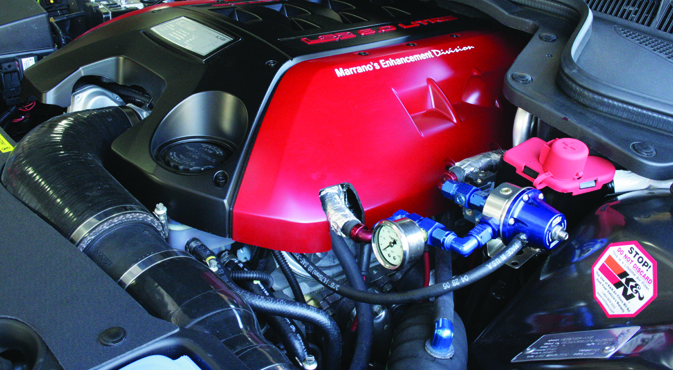
Materials
Today’s fuels have a variety of chemicals to increase their octane rating. The higher the octane rating, the less susceptible it is to engine knock. Fuels such as alcohol and unleaded race fuels can corrode untreated metals and destroy diaphragms. All Turbosmart FPR’s use anodized billet aluminium bodies for strength and corrosion resistance. The FPR800 uses a diaphragm that can withstand any type of pump fuel. In contrast to the FPR1200, FPR2000, and FPR3000 which have diaphragms that can handle any type of race fuel or alcohol.
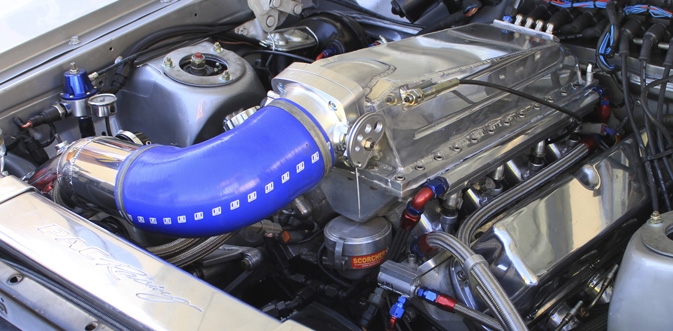
Base Pressure
All injectors have a recommended optimal working base pressure from the manufacturer. Moreover, the FPR needs to be adjusted to provide this optimal base pressure. Turbosmart FPR’s have adjustments screws that allow the user to set the base pressure between 30 – 70 PSI. Further, allowing them to be matched to any type of fuel injector and fuel pump.
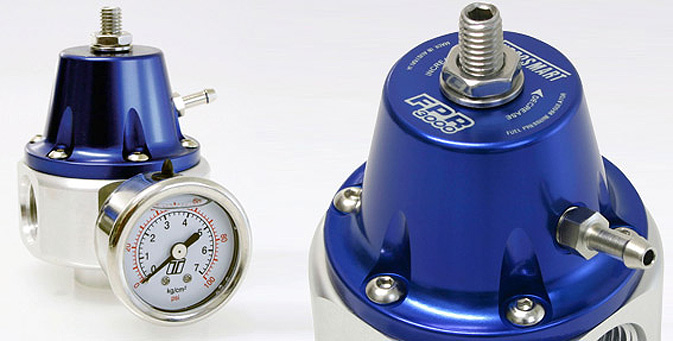
What To Consider When Choosing A Turbosmart FPR?
Target Power Level
The target power level will determine the amount of fuel needed from the fuel pumps. In addition to the amount of fuel, the FPR needs to control. The higher the target power level. The more fuel flow needed and the larger the FPR needs to be to flow enough fuel to keep pressures at the desired level. To sum up, all Turbosmart FPR’s are horsepower rated to the series number. For Example, The FPR1200 is capable of controlling 1200 horsepower worth of fuel.
Fuel Type
It is best to choose an FPR that is capable of handling the type of fuel being used on the engine. Streetcars that use pump fuel can use the FPR800. In contrast with race cars using race, fuel or alcohol will need to use the higher FPR series such as the FPR1200, FPR2000, and FPR3000.
Custom setup and need advice?
Find products to suit your car
Here is a handy self-help guide to helping you with your Turbosmart install and answers to some of the most frequently asked questions we get here. Turbosmart recommends that you get your products fitted and tuned by a qualified technician. If you choose to install the product yourself, ensure you have all the necessary tools and technical knowledge to perform this task.
Thank you for picking up the latest Turbosmart catalogue. As we look back on 25 fantastic years of innovation and growth, we continue to look towards the future as we release some revolutionary new products that will cement our reputation as innovators and market leaders.
Please contact us here and fill out a quick form so that our team can efficiently help you!
Turbosmart Fuel Pressure Regulator Range
Engineered to Win!
The installation of performance fuel injectors or a high-flow fuel pump requires the use of an aftermarket fuel pressure regulator to allow pressure adjustments while maintaining a stable base pressure.
About Turbosmart
From our humble beginnings to establishing ourselves as a global brand, Turbosmart is well on track to lead the future in turbo technology.
Our engineers build and track-test all products in-house. Therefore, we ensure we continuously produce the highest-quality, highest-performance Turbochargers, blow-off valves, wastegates, boost controllers, fuel pressure regulators, oil pressure regulators and more. Furthermore, our products are designed and built for track and street applications.
How Do I choose the Right Fuel Pressure Regulator?
Engineered to Win!
Turbosmart has a full range of Fuel Pressure Regulators, with class leading control, across all 3 sizes. We’re often asked “which one do I need for my setup?” In this video we cover everything you need to know about choosing the right FPR for your build!

